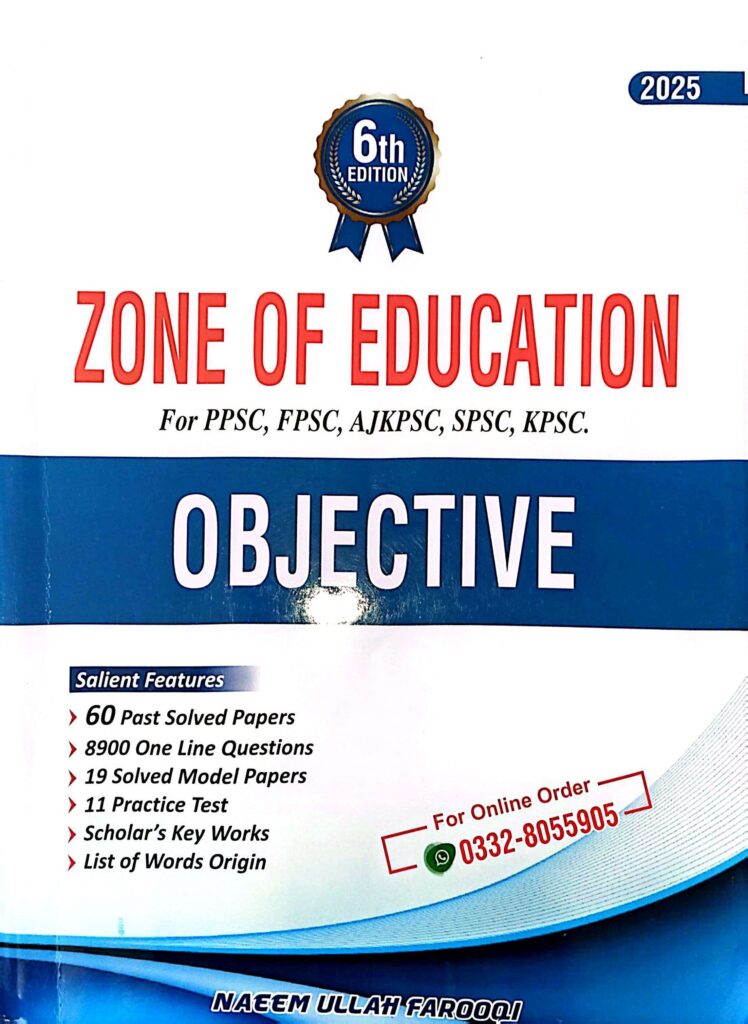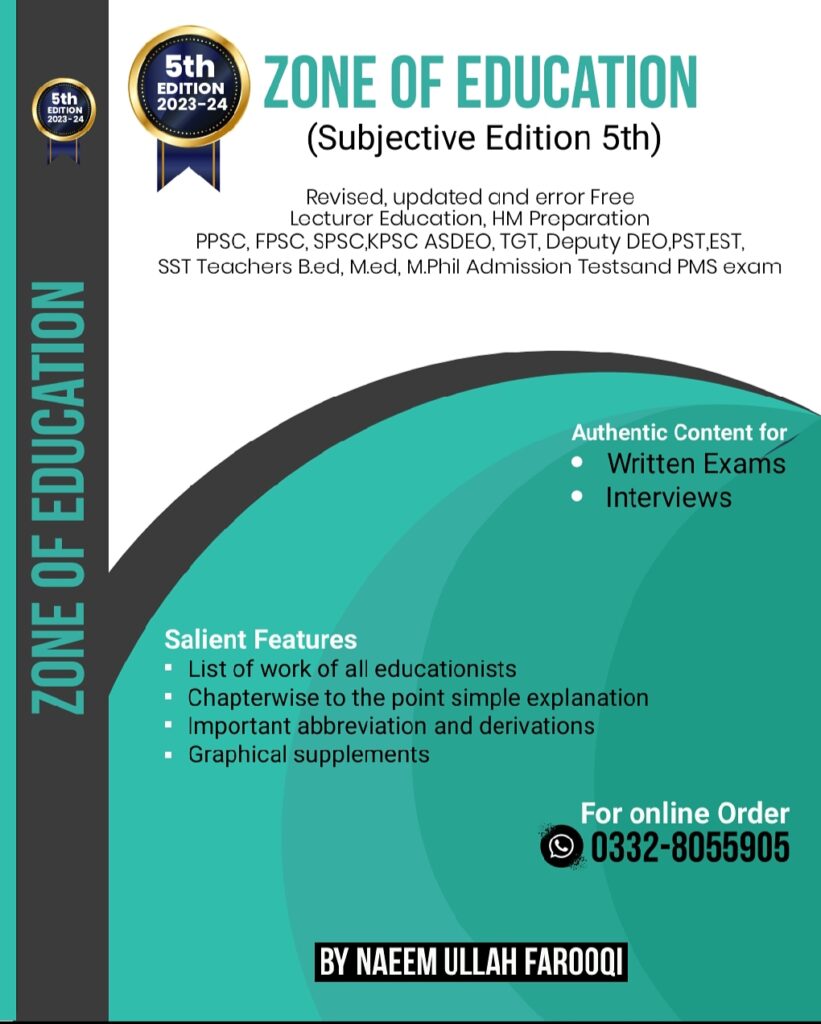Assessment.
141. Which of the following does not belong to SOLO taxonomy?
A. Uni-structural
B. Synthesis
C. Relational
D. Extended Abstract
Ans: B. Synthesis
142. According to Linn, Miller, and Gronlund, the criteria for selecting appropriate instructional objectives shall include:
A. Completeness, appropriateness, reliability, feasibility
B. Comprehensiveness, appropriateness, soundness, feasibility
C. Completeness, Effectiveness, soundness, feasibility
D. Completeness, appropriateness, soundness, feasibility
Ans: D. Completeness, appropriateness, soundness, feasibility
143. Which of the following questions is related to Completeness in Linn, Miller, and Gronlund’s criteria for selecting appropriate instructional objectives?
A. Are all important outcomes included?
B. Are outcomes related to school goals?
C. Are outcomes in harmony with sound principles of learning?
D. Are outcomes realistic?
Ans: A. Are all important outcomes included?
144. Which of the following questions is related to Appropriateness in Linn, Miller, and Gronlund’s criteria for selecting appropriate instructional objectives?
A. Are all important outcomes included?
B. Are outcomes related to school goals?
C. Are outcomes in harmony with sound principles of learning?
D. Are outcomes realistic?
Ans: B. Are outcomes related to school goals?
145. Which of the following questions is related to Completeness in Linn, Miller, and Gronlund’s criteria for selecting appropriate instructional objectives?
A. Are all important outcomes included?
B. Are outcomes related to school goals?
C. Are outcomes in harmony with sound principles of learning?
D. Are outcomes realistic?
Ans: A. Are all important outcomes included?
146. Which of the following questions is related to Appropriateness in Linn, Miller, and Gronlund’s criteria for selecting appropriate instructional objectives?
A. Are all important outcomes included?
B. Are outcomes related to school goals?
C. Are outcomes in harmony with sound principles of learning?
D. Are outcomes realistic?
Ans: B. Are outcomes related to school goals?
147. Which of the following questions is related to Soundness in Linn, Miller, and Gronlund’s criteria for selecting appropriate instructional objectives?
A. Are all the important outcomes included?
B. Are the outcomes realistic?
C. Are the outcomes related to school goals?
D. Are the outcomes in harmony with the principles of learning?
Ans: D. Are the outcomes in harmony with the principles of learning?
148. Which of the following questions is related to Feasibility in Linn, Miller, and Gronlund’s criteria for selecting appropriate instructional objectives?
A. Are all important outcomes included?
B. Are outcomes realistic?
C. Are outcomes related to school goals?
D. Are outcomes in harmony with the principles of learning?
Ans: B. Are outcomes realistic?
149. Which of the following statements has been stated in terms of learning outcome?
A. Student learns meaning of concept
B. Student studies present tense
C. Student matches word with picture
D. None
Ans: C. Student matches word with picture
150. Which of the following states the specific learning outcome?
A. Understands the scientific method
B. Identifies the steps of scientific method
C. Knows the scientific method
D. None
Ans: B. Identifies the steps of scientific method
151. Which of the following learning outcome is observable?
A. Understands the scientific method
B. Enlists the steps of scientific method
C. Knows the scientific method
D. None
Ans: B. Enlists the steps of scientific method
152. Which of the following best describes test?
A. The process of obtaining numerical description
B. An instrument of measuring performance
C. A quantitative or qualitative description
D. Obtained marks
Ans: B. An instrument of measuring performance
152. Which of the following best describes measurement?
A. The process of obtaining numerical description
B. An instrument of measuring performance
C. A quantitative or qualitative description
D. Obtained marks
Ans: A. The process of obtaining numerical description
153. MCQs are a form of:
A. Subjective type
B. Objective type
C. Essay type
D. None
Ans: B. Objective type
154. Questions demanding writing an essay are a form of:
A. Subjective type
B. Objective type
C. Fixed-Response Type
D. None
Ans: A. Subjective type
155. MCQs are a form of:
A. Fixed-Response type
B. Supply type
C. Essay type
D. None
Ans: A. Fixed-Response type
156. Which of the following is an example of a supply type test question?
A. Multiple Choice
B. True/False
C. Short answer
D. None
Ans: C. Short answer
157. Which of the following is an example of a supply type test question?
A. Multiple Choice
B. True/False
C. Essay writing
D. None
Ans: C. Essay writing
158. In matching items type questions, the item for which a match is sought is:
A. Stem
B. Premise
C. Response
D. None
Ans: B. Premise
159. The purpose of a pre-test shall be:
A. Determining readiness
B. Modifying instruction
C. A & B
D. None
Ans: C. A & B
160. Which of the following consists of the statement of the problem in MCQs?
A. Answer
B. Stem
C. Response
D. None
Ans: B. Stem
161. The analysis of items is crucial in the development of:
A. Standardized Test
B. Essay Type Test
C. Both A and B
D. None
Ans: A. Standardized Test
162. If a test measures a single construct then:
A. The items should not correlate with the total score
B. The test should not correlate with other measures of the same construct
C. The items should correlate with the total score
D. None
Ans: C. The items should correlate with the total score
163. The measure of a test showing ease of time, cost, and administration is called:
A. Reliability
B. Usability
C. Differentiability
D. None
Ans: B. Usability
164. The test measures what it actually intends to measure is a notion of:
A. Validity
B. Reliability
C. Objectivity
D. Usability
Ans: A. Validity
165. If a test accurately indicates students’ scores on a future criterion, it would have:
A. Face validity
B. Predictive validity
C. Concurrent validity
D. None
Ans: B. Predictive validity
166. The quality of a test to give consistent scores even when administered at different times is:
A. Reliability
B. Differentiability
C. Objectivity
D. None
Ans: A. Reliability
167. Which of the following statements best describes reliability?
A. Consistency of assessment results
B. Adequacy of assessment results
C. Appropriateness of assessment results
D. None
Ans: A. Consistency of assessment results
168. In which of the following question types will marking be more reliable?
A. Short answer
B. MCQs
C. Essay
D. None
Ans: B. MCQs
169. In which of the following question types will marking be least reliable?
A. MCQs
B. Short answer
C. Unstructured essay
D. None
Ans: C. Unstructured essay
170. Kuder-Richardson method is a measure for:
A. Validity
B. Reliability
C. Objectivity
D. Usability
Ans: B. Reliabilit
JOIN ZONE OF EDUCATIONPK!
Discover the most comprehensive and reliable pedagogy resources in Pakistan, curated for competitive exam success. Our content covers all competitive exam MCQs, including PPSC, FPSC, AJKPSC, SPSC, and more. Designed to empower learners with top-notch material and insights, trust us for your preparation journey!


